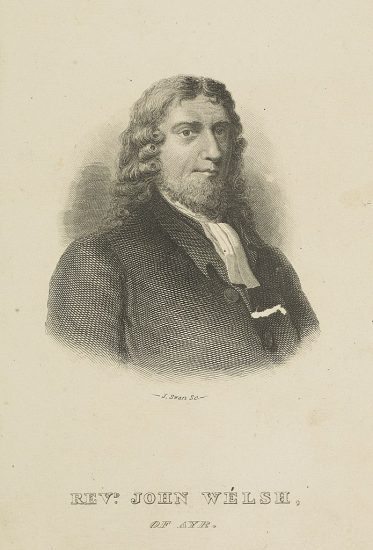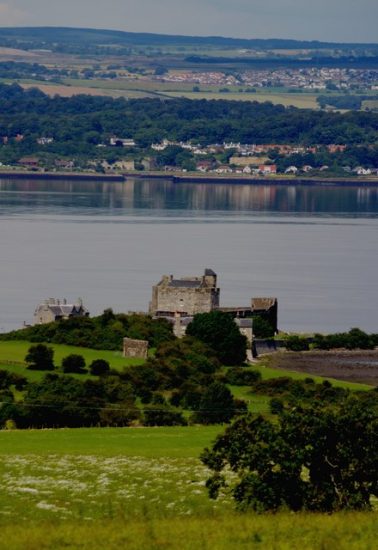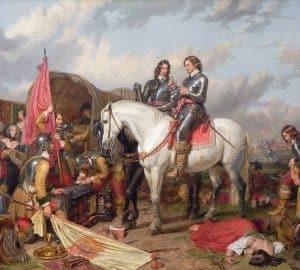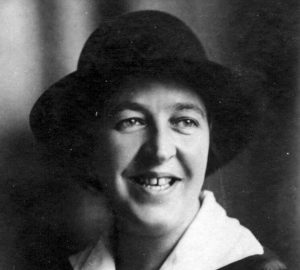The life and testimony of a man is often seen best in the lives of his children. When we speak of the legacy of John Knox, the Reformer of Scotland, we usually think first of the Confession of Faith that he drafted, the Lords of the Congregation that he encouraged, the various writings that came from his pen, or the sermons that came from his pulpit. But perhaps the most important legacy that John Knox left behind him was that of his youngest daughter. John Knox had two sons by his first wife, Marjory, but they both died young before full maturity. Knox had three daughters by his second wife, Margaret. The daughters were named Martha, Margaret, and Elizabeth. All three girls married Scottish ministers and lived faithful lives. It is the youngest daughter, Elizabeth, whose life we are going to examine here.
Elizabeth Knox was born around the year 1568. She was related to the royal line in Scotland, for her mother’s maiden name was Stuart. It enraged Mary Queen of Scots that John Knox had married a member of the royal family, one of her own cousins! Although Elizabeth would have retained only the dimmest memories of her father, she was certainly among the fondest objects of his most fervent prayers during the closing days of his life. John Knox died when Elizabeth was four years old, and she was perhaps in the room when her dying father asked her mother to read to him from John 17, where he cast his “first anchor.”
A few years after the death of John Knox, Elizabeth’s mother was remarried to Sir Andrew Ker, a Scottish nobleman and zealous member of the Reformed party. In this Godly home, she grew up with a love for the Gospel and the truths of the Reformation that her father had preached. Upon maturity, Elizabeth was united in marriage to John Welch, a faithful young minister in Selkirk. They were married in 1595 and soon moved to Ayr on the southwest coast of Scotland. For the first few years of their marriage, all went smoothly for the Reformed Church in Scotland. God blessed John and Elizabeth with six children.

When James VI of Scotland, the son of Mary Queen of Scots, ascended the English throne as well taking the title of King James I of England, the new king sought to bring Scotland into conformity with the government and ceremonies of the English Church. He dissolved the General Assembly, and threatened the Reformed ministers that believed that Jesus Christ was King of Scotland and Head of His Church. John Welch faithfully stood against the new innovations thrust upon the Church of Scotland. In 1606, he was summoned to stand before the privy council at Edinburgh, and refusing to conform, was conveyed by guard to captivity at Blackness Castle under a charge of high treason.
Elizabeth left her children at Ayr and set out to visit her husband in the depth of winter. She was at his side when he stood trial and was sentenced to be banished from Scotland. She stood with her husband at the pier at Leith where he was taken on a ship bound for France. Bravely, Elizabeth went back to Ayr to join her children and prepare them to accompany her into banishment with her husband. The following year, Elizabeth and the children joined John Welch in France.
Faithful to his calling, John Welch had devoted himself to learn the French language and managed to master it in only 14 weeks. He occupied a pulpit in Jonsack and ministered faithfully to his Huguenot congregation. In France, far from their native land, John and Elizabeth sought to raise their children to love and serve the Lord Jesus. John Welch became noted for his earnest prayers, and many remarkable stories abound concerning his prayers. One observer who saw Pastor Welch praying in his garden late one night testified that he was surrounded by a bright glow of heavenly light as he prayed. Another story recounts how John Welch was left alone in the company of a corpse that the French doctors had pronounced dead. After praying over the corpse as Elijah did over the son of the widow, the dead man opened his eyes and spoke plainly, astonishing all that witnessed the miracle. On another occasion, a traveling Roman Catholic friar overheard Pastor Welch at his prayers. The friar renounced Popery and became a firm Protestant. When Louis XIII of France made war on his Protestant subjects, Pastor Welch took part in the war and helped to defend a besieged Huguenot town. He carried gunpowder in a vessel to the gunners. When the vessel was knocked from his hands by a projectile, he used his hat to carry powder until the battle was over.

In 1621, John Welch received permission to return to England. By this time, his health was broken by his imprisonment in Blackness Castle and by his exertions in France. Elizabeth and the children accompanied John Welch to London. Friends in court suggested that Elizabeth might go before King James and plead her husband’s case, asking that he be allowed as a faithful minister of the Gospel to return to his home and pulpit in Scotland. She received an audience, and was ushered into the throne room of King James I. The King was resolved that Pastor Welch should not be allowed to return to Scotland unless he complied with the orders to conform to the ceremonies of the Church of England. During the conversation, King James happened to ask Elizabeth who was her father. She replied, “John Knox.”
King James started up and exlaimed “Knox and Welch!” Then he uttered an unrepeatable oath as was his custom, and continued, “The devil near made such a match as that!”
Elizabeth firmly answered, “It’s right-like, sir, for we never speired (asked) his advice.”
The curious King James then asked Elizabeth how many children John Knox had and if they were “lads or lasses.” She answered, “Three. All lasses.” James then replied profanely, “God be thanked! For had they been three lads, I had never enjoyed my three kingdoms in peace!”
Elizabeth entreated again that the king might be pleased to give her husband his native air. “Give him the devil!” replied James. James again promised to allow Welch to return to Scotland if he conformed to the Church of England.

The daughter of John Knox and the wife of John Welch stood as a strong pillar at this offer of compromise.
Elizabeth lifted up her apron and spread it out before King James and said, “Please your majesty, I’d rather kep (receive) his head there.” With this remark, that she would rather take the decapitated head of her husband into her apron than see him compromise the truth, Elizabeth withdrew from the king’s presence.
Mercifully, John Welch went to his eternal reward only a short time later. Elizabeth survived her husband for two years, joining him in glory in January of 1625. Elizabeth’s own children lived faithfully for Christ in their own generation. One son became a medical doctor and died in the Netherlands. Another son was shipwrecked on a desolate rock. His body was found kneeling in prayer. Another son became a faithful minister of the Gospel in northern Ireland. A grandson of John and Elizabeth became one of the firm leaders of the Scottish Covenanters. John Knox led not only his country and his church, but also his family in the succeeding generations to love and serve Christ in the rising future.
Bibliography
Ladies of the Reformation by James Anderson
The Scots Worthies by John Howie




